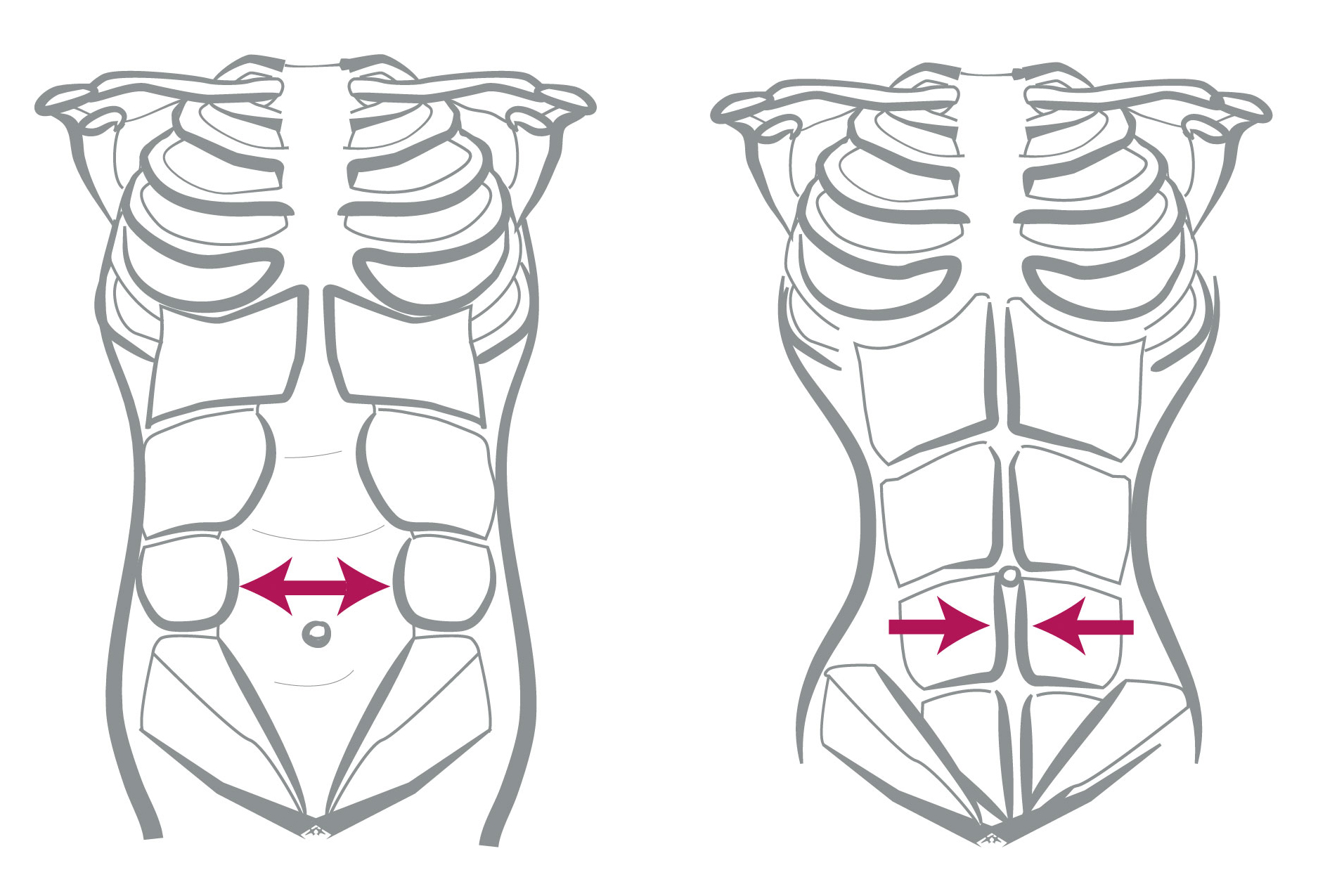Rectus diastasis – separation of the tummy muscles
Fri,Feb 06, 2015 at 03:37PM by Body Organics
What is rectus diastasis?
Rectus diastasis (also known as diastasis recti) is the separation of the connective tissue (fascia) that joins the left and right sides of the abdominal muscles together. This occurs most commonly in pre or post partum women. The hormonal changes during pregnancy coupled with the increased load on the abdominal muscles from the growing belly can be factors in the separation of these tissues.
What problems can rectus diastasis cause if I’m pregnant?
Unfortunately rectus diastasis is very common and can have some very serious consequences. As most of us know the abdominals have some very important functions in lumbo-pelvic stability. Disturbances to the forces around the core can lead to low back pain, pelvic girdle pain as well as dysfunction in the pelvic floor. New mums may notice a bulge or ridge around the belly button when they sit up and engage their abdominals; they may also notice if they belly is relaxed that they are able to press their fingers into the abdominal cavity.
What can I do to minimise the effects of rectus diastasis?
Research has shown that therapeutic exercise can help to minimise the amount of diastasis both pre and post partum. Physiotherapy and pilates can help new mums understand and manage the symptoms of their rectus diastasis. Prenatally a physiotherapist will be able to:
// Assess the degree of separation of the abdominal wall;
// Teach appropriate core and pelvic floor engagement;
// Educate on techniques to engage the transversus abdominis, or brace during activities such as lifting, coughing and defecating, which are very important and will help to prevent pelvic health issues that may arise in the postnatal period;
// Recommend other supports for the abdominal wall and pelvic region that help to decrease the load on the abdomen and help to increase stability around the pelvis;
// Teach and educate on safe exercises for the core and pelvic floor during and after pregnancy. It is very important that exercises that stress the abdominal wall such as sit ups and heavy lifting are avoided as much as possible to prevent further tearing. Breathing techniques can also be used to help prevent increased stress on the abdomen and pelvic floor.
If you think you may have a separation of your abdominal wall it is best to have it assessed by a physiotherapist before you begin a new exercise program!
Find our more about pregnancy pilates at Body Organics.
Leah Moroz practises physiotherapy and teaches pilates in Brisbane with Body Organics. She is a Canadian trained physiotherapist, graduating from the University of Alberta’s Masters of Science in Physiotherapy after completing her undergraduate degree in Kinesiology (Human Movement) at the University of Alberta.
 0
0 
